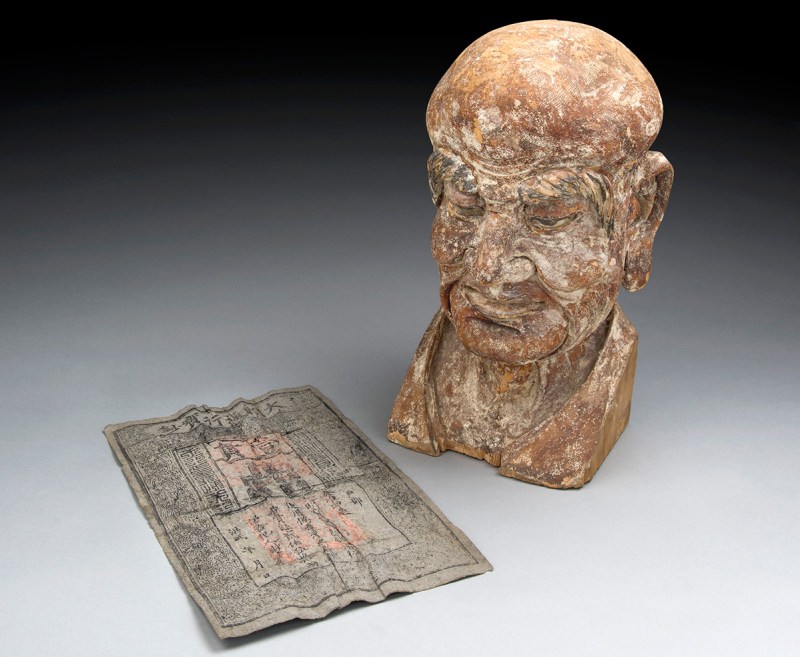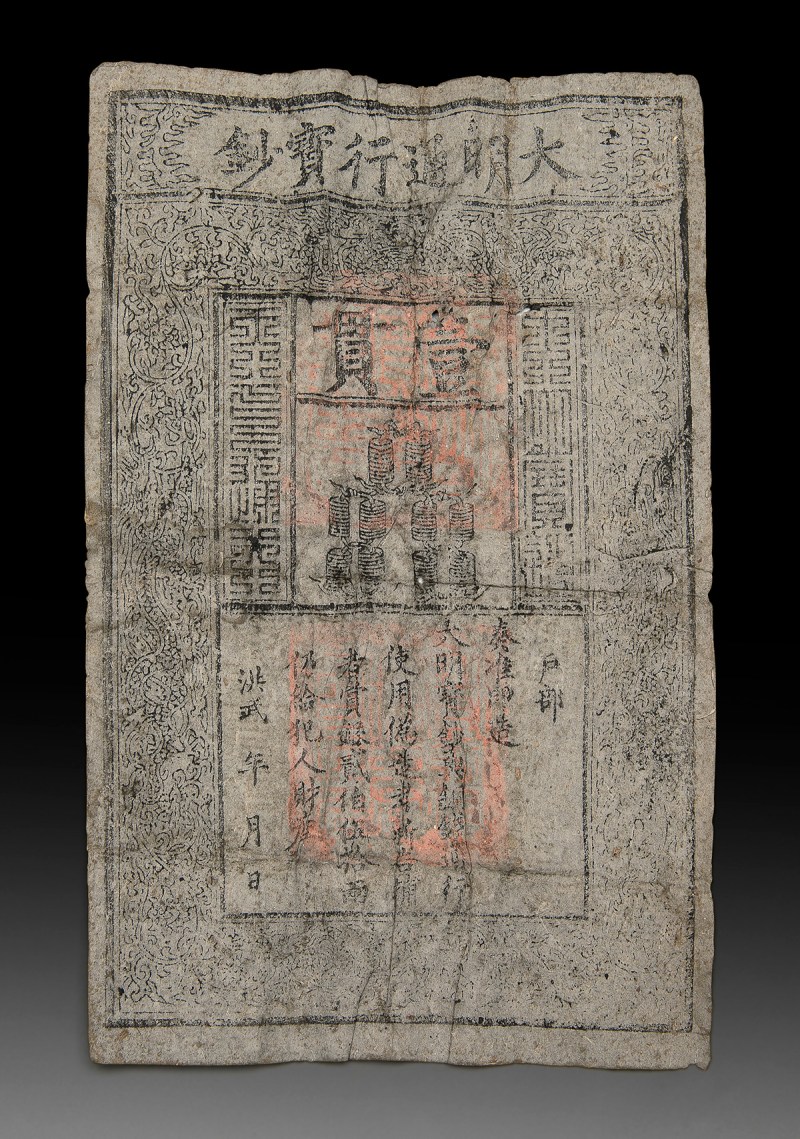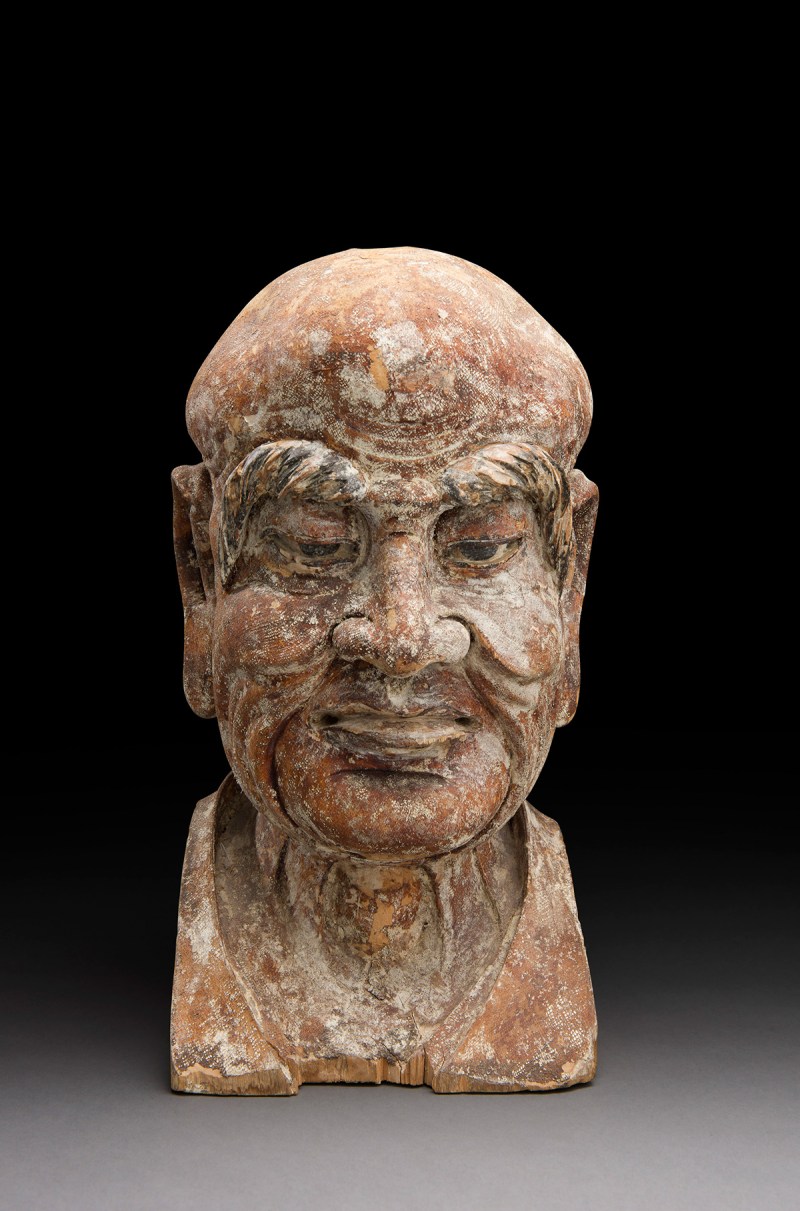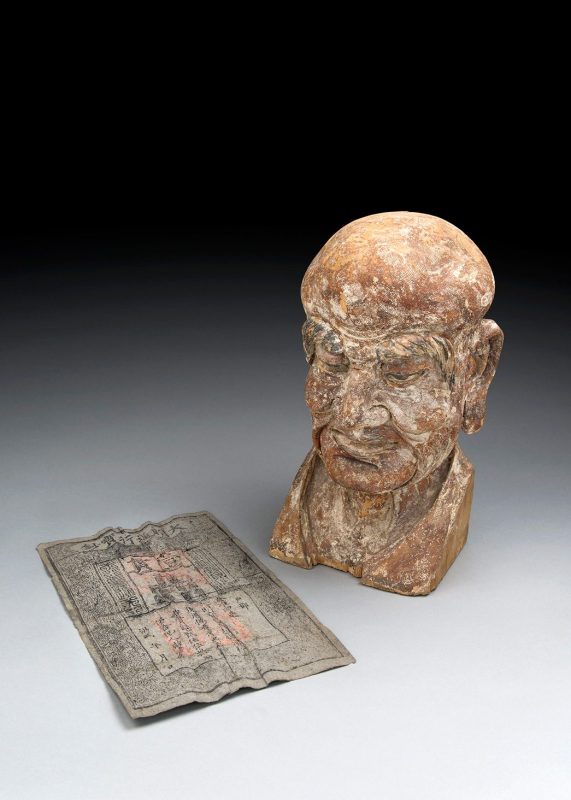
It’s not every day that an auction house inspects one item and finds another rarer one inside it.
That’s what happened at Australia’s Mossgreen Auctions, when head of Asian art Ray Tregaskis was investigating one of the pieces in “The Raphy Star Collection of Important Asian Art,” which is set to go under the hammer Dec. 11-12 in Sydney. The private collection was put together over a 30 year period by the title collector, Star, who obtained a diverse range of items at international auction houses. The collection of rare artifacts represents a wide swath of Asian countries, including China, Vietnam, Cambodia, Japan, Korea, and Tibet.

The piece in question is a large wooden sculpture from China of a Luohan, or Buddhist who has completed the four stages of enlightenment and achieved nirvana. Carved during the Jin/Yuan Dynasty in the 13th or 14 century, the sculpture itself is estimated to be worth between $28,000–$42,000 alone, but from a cavity under the sculpture’s head, Tregaskis pulled a crumpled banknote. Said the Asian art specialist in a prepared statement:
“While it was not unusual for consecration items such as semi-precious stones or scrolls to be left within the base or on the back of a sculpture, the discovery of this rare Ming Dynasty banknote is an exciting one and importantly, it verifies the date of the sculpture.”
According to CNN, the banknote is more than 700 years old, and has written on it this inscription:
“Authorized by the Department of Finance, this bank note has the same function of coins. Those who use counterfeit banknotes will be beheaded, the whistle-blower will be rewarded 250 Liang silvers plus all the properties of the criminal. The third year of Hong Wu period.”
Per CNN, it’s known as a “one guan” note, the equivalent to about $100 today—thought it was the highest paper denomination at the time. If you were wondering, if the note itself were to go up for auction, it would have a pre-auction estimate of about $2,000–$4,000.

For more on the unique sculpture and the rest of the Raphy Star Collection, click here.
This article was featured in the InsideHook newsletter. Sign up now.
























